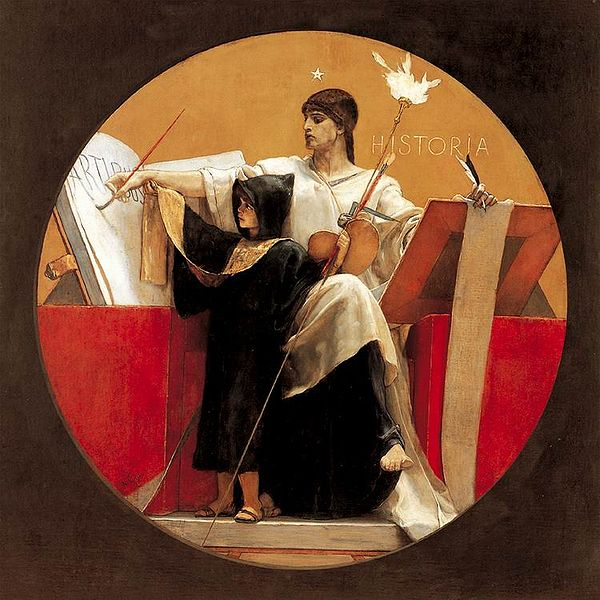A Guide to the Key Stage 3 programme (pre-2014)
Key Stage 3 Guide

Please note: this unit was produced for a previous national curriculum (pre-2014). However, much of the advice remains useful and it provides a context to topics that continue to be very important for history teachers. Subject leaders, ITE providers and others may find it useful to consider how currently relevant topics were thought about in a different educational context. It is possible to compare and contrast how history teaching is currently framed and discussed with the approach in this unit.
To help you implement the curriculum, our guide provides a variety of resources that enable you to explore the concepts, processes, range and content in the new programme of study. They include background information, articles from ‘Teaching History', exemplar schemes of work, lists of useful resources and suggestions for further reading and INSET activities. You can work through the material on your own or use the materials for departmental INSET. The guide is under development and some sections have yet to be completed. It will be updated as new ideas and exemplars are devised. The guide has been produced by a number of top history teaching professionals and has been compiled and edited by Sue Bennett, freelance education consultant and Suzy Powling, freelance editor.
This resource is FREE to all registered users of the website
If you are not already registered you can sign up for FREE Basic Website Access or Join the HA to access this content.
Introduction to the new programme of study
- 1. An Introduction to the new Key Stage 3 programme
Concepts
- 2. Key Concepts
- 2.1 Chronological understanding
- 2.1.a Chronological understanding: Ideas for CPD
- 2.1.b Chronological understanding: Teaching Strategies
- 2.1.c Ideas for developing chronological understanding in Year 9
- 2.1.d Ideas for developing chronological understanding in Year 11
- 2.1.e Chronological understanding: Further Reading & Resources
- 2.2 Cultural, ethnic and religious diversity
- 2.2.a Cultural, ethnic and religious diversity: Scheme of work
- 2.2.b Planning to deliver diversity over a three-year key stage 3 history programme
- 2.3 Change and continuity
- 2.3.a Change and Continuity - Discussion Paper
- 2.3.b Change and Continuity - Planning
- 2.3.c Change and Continuity - INSET activities
- 2.3.d Change and Continuity - Further Reading
- 2.4 Cause and consequence
- 2.4.a Cause, consequence and historical explanation (1)
- 2.4.b Cause, consequence and historical explanation (2)
- 2.4.c Cause and consequence key principles
- 2.4.d Cause and consequence: Resources
- 2.4.e Cause and consequence: Ideas for departmental inset
- 2.4.f Cause and consequence: References
- 2.5 Significance
- 2.5.a Significance: Ideas for CPD
- 2.5.b Significance: Resource 1: Bosworth
- 2.5.c Significance: Resource 2: Significant Individuals
- 2.5.d Significance: Further Reading
- 2.6 Interpretations
- 2.6.a Interpretations: Ideas for CPD
Processes
- 3. Key Processes
- 3.1 Developing enquiry skills
- 3.1.a Developing enquiry skills: Ideas for CPD
- 3.1.b Developing enquiry skills: Producing the final outcome
- 3.2 Planning for historical enquiry
- 3.2.a Planning for historical enquiry: Ideas for CPD
- 3.3 Using Evidence (1)
- 3.3 Using evidence (2)
- 3.4 Communicating about the Past
- 3.4.a Communicating about the Past: Ideas for CPD
Range and Content
- 4. Range and Content
- 4.1 The development of political power
- 4.2 England, Ireland, Scotland and Wales
- 4.3 The movement and settlement of peoples
- 4.3.1 Scheme of work - The English: a diverse people
- 4.4 The development of the British Empire
- 4.5 The changing nature of conflict and co-operation
Curriculum Opportunities
- 5. Curriculum Opportunites
- 5.1 Personal and local history
- 5.1.a Personal and local history: Ideas for local and family history enquiries
- 5.1.b. Personal and local history: Further Resources
- 5.2 Using museums and other sites
- 5.2.a Using museums, galleries, archives and sites
- 5.2.b Planning a museum/site visit checklist
- 5.2.c Using museums and other sites: Model of carousel of activities
- 5.2.d Planning for out of classroom learning experiences in museums
- 5.2.e Using museums and other sites: Further reading
Planning
- 6. Planning
- 6.1 Importance Statement
- 6.2 Audit Tool
- 6.3 How to devise a key stage plan
- 6.4 How to devise a two-year plan (1)
- 6.4 How to devise a two-year plan (2)
- 6.4.a How to devise a two-year plan: Ideas for CPD
- 6.4.b How to devise a two-year plan: Further reading
- 6.5 Planning for Year 9 extension activities after a two-year key stage 3 programme
- 6.6 How to devise a scheme of work
- 6.7 Progression
Teaching, Assessment and Other Issues
- 7. Teaching and learning
- 7.1 Questioning
- 7.2 Gifted and talented pupils
- 7.3 Pupils with special needs
- 7.4 Progression from Key Stage 2
- 7.5 Assessment
- 7.6 Acknowledgements

